'Commodity Expansion' means applying the safe rate system as far as the whole stage of distribution process.
'Expansion to all' may result in a definite increase in the entire trading cost and market price.
For the mega·long distance·tough driving transport, a safe rate system is inevitable.
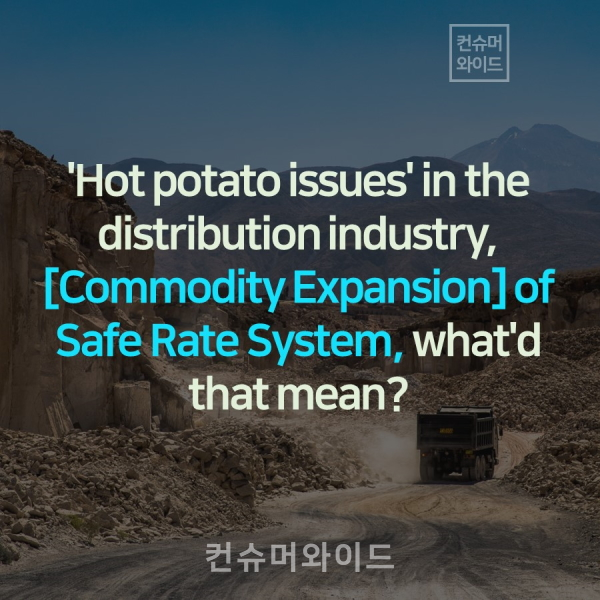

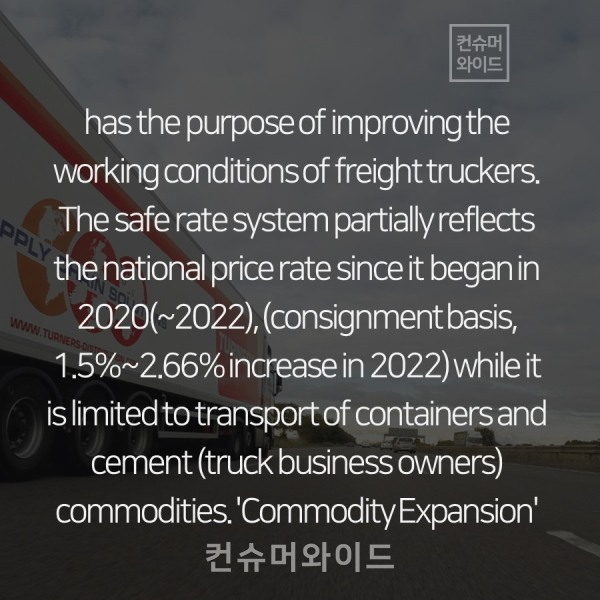

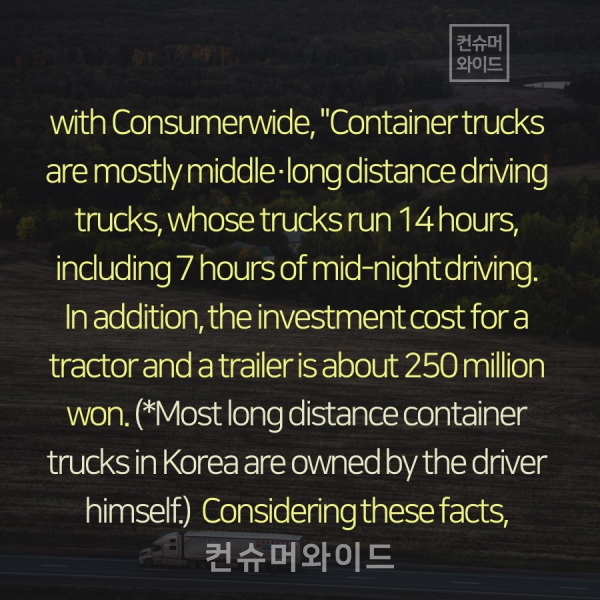
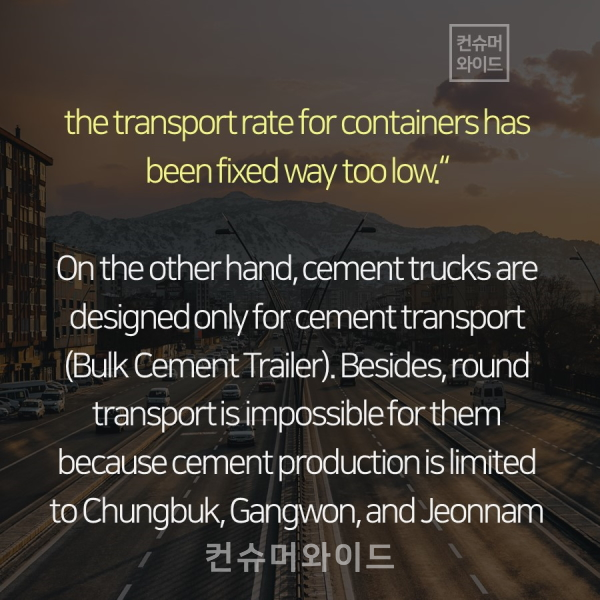
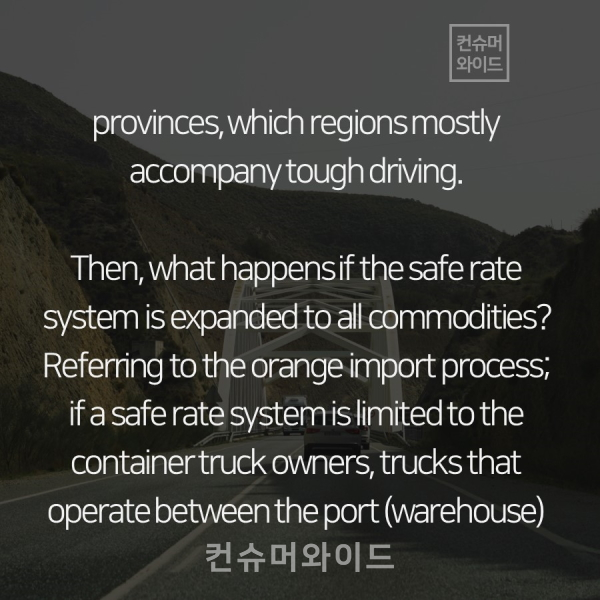
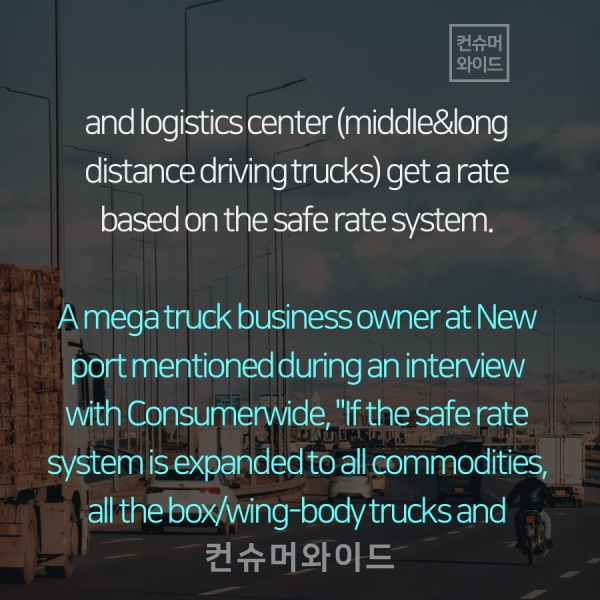
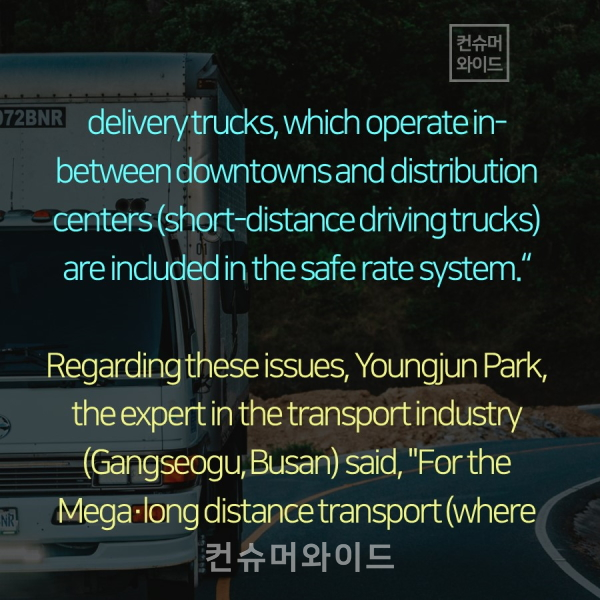
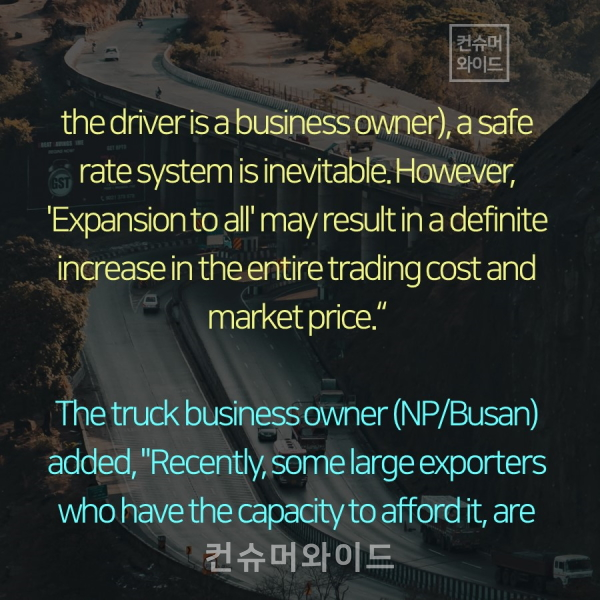
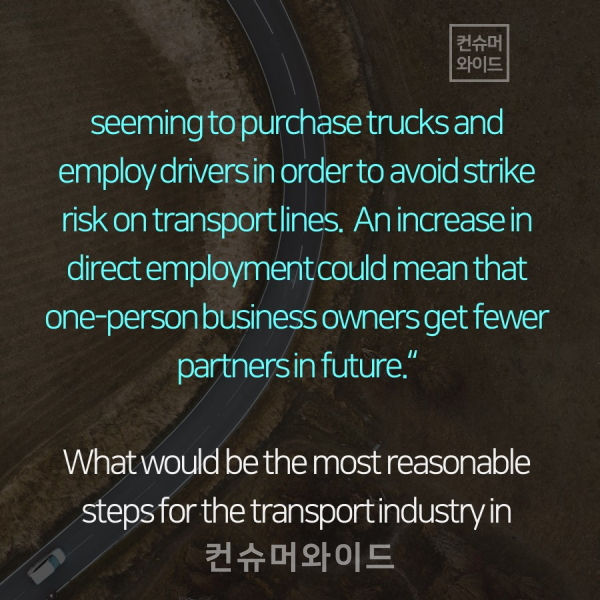

[Consumerwide_ Yohan, Bok Reporter] This time, I'd like to talk about what the 'Commodity Expansion' of Safe Rate System means, concerning the ongoing strike (Truck business owners) in South Korea.
First of all, a 'safe rate system' in Korea, which sets minimum rates for freight transport under government supervision through discussion with relevant parties, has the purpose of improving the working conditions of freight truckers.
The safe rate system partially reflects the national price rate since it began in 2020(~2022), (consignment basis, 1.5%~2.66% increase in 2022) while it is limited to transport of containers and cement (truck business owners) commodities.
'Commodity Expansion' means that applying the safe rate system not only in the early stage of distribution, but as far as throughout the whole stage of distribution. Then what was the reason for choosing these particular commidities in the first place?
Youngjun Park, an expert in the transport industry said during an interview with Consumerwide, "Container trucks are mostly middle·long distance driving trucks, whose trucks run 14 hours, including 7 hours of mid-night driving. In addition, the investment cost for a tractor and a trailer is about 250 million won. (*Most long distance container trucks in Korea are owned by the driver himself) Considering these facts, the transport rate for containers has been fixed way too low."
On the other hand, cement trucks are designed only for cement transport (Bulk Cement Trailer). Besides, round transport is impossible for them because cement production is limited to Chungbuk, Gangwon, and Jeonnam provinces, which regions mostly accompany tough driving.
Then, what happens if the safe rate system is expanded to all commodities? Referring to the orange import process; if a safe rate system is limited to the container truck owners, trucks that operate between the port (warehouse) and logistics center (middle&long distance driving trucks) get a rate based on the safe rate system.
A mega truck business owner at New port mentioned during an interview with Consumerwide, "If the safe rate system is expanded to all commodities, all the box/wing-body trucks and delivery trucks, which operate in-between downtowns and distribution centers (short-distance driving trucks) are included in the safe rate system."
Regarding these issues, Youngjun Park, the expert in the transport industry (Gangseogu, Busan) said, "For the Mega·long distance transport (where the driver is a business owner), a safe rate system is inevitable. However, 'Expansion to all' may result in a definite increase in the entire trading cost and market price."
The truck business owner (NP/Busan) added, "Recently, some large exporters, who have the capacity to afford it, are seeming to purchase trucks and employ drivers in order to avoid strike risk on transport lines. An increase in direct employment could mean that one-person business owners get fewer partners in future."
What would be the most reasonable steps for the transport industry in Korea to secure truck owners' business?
*This news report is written based on two interviews held on 7th of Dec at Gangseogu Busan (Youngjun Park, an expert in the transport industry) and 3rd of Dec at New port Busan (a mega truck business owner/ experienced truck driver over 25 years)*

